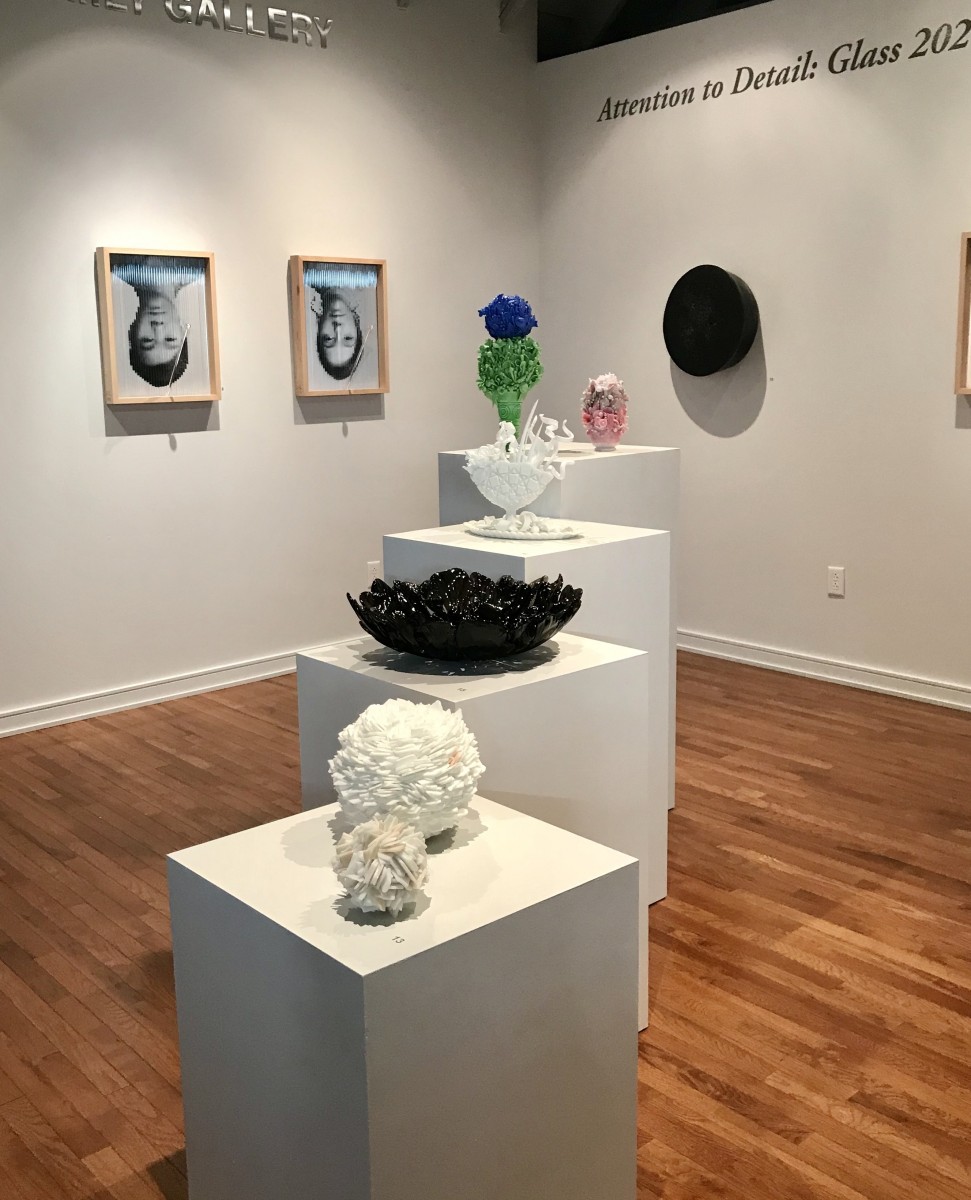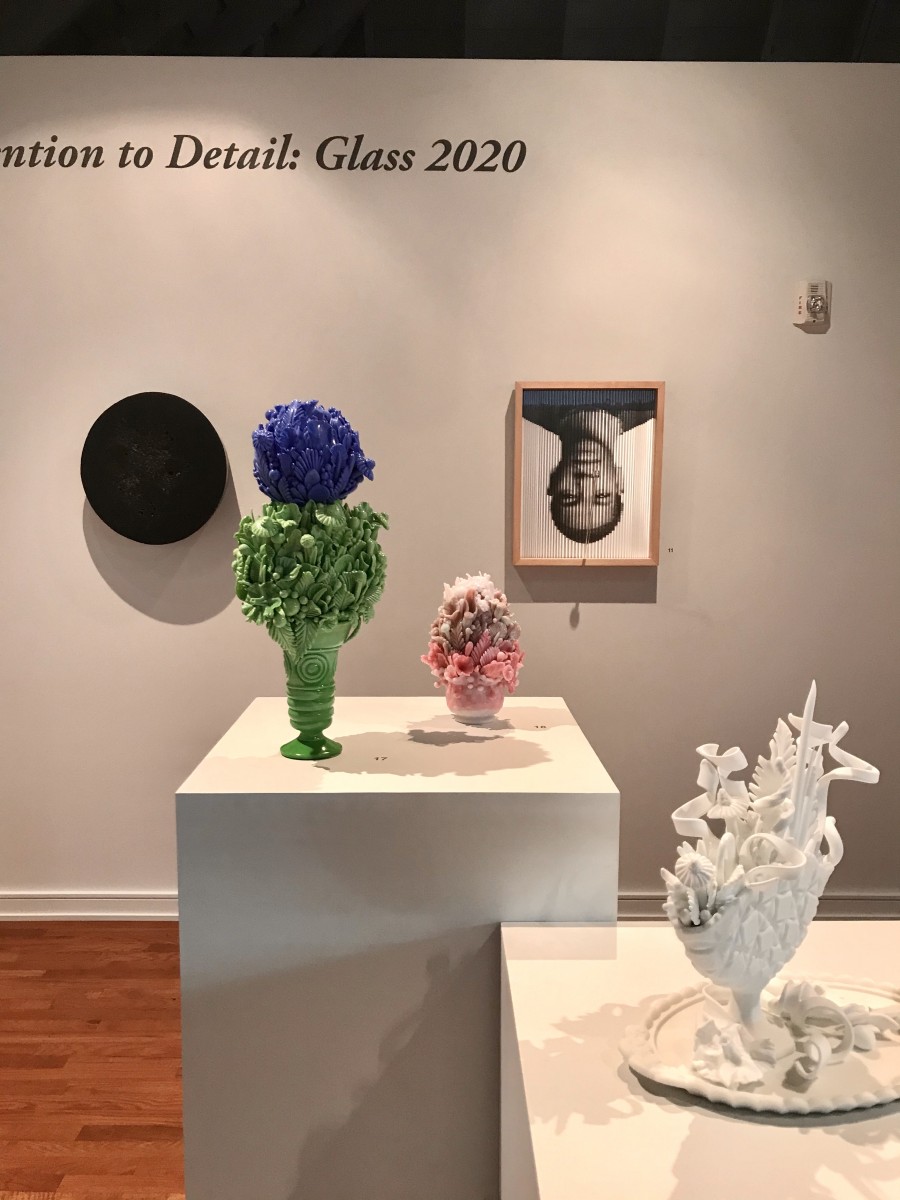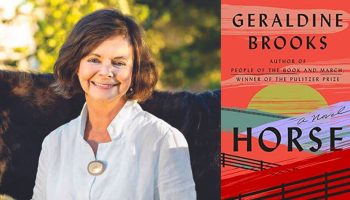There was a time when colorful pressed glass vases, dishes, cups and more adorned millions of American homes.
“The pressed glass industry was a massive booming industry at one point,” said sculptor Amber Cowan. “There were entire towns, cities really, built around a cut glass factory. Now people just recognize this stuff as tchotchkes, (stuff) their grandma had around her house.”
While many of these pieces are now collecting dust on thrift store shelves, flea market tables and long-closed factories, Cowan’s sculptures bring pressed glass all the way into the new century.
The Philadelphia-based artist is one of four contemporary glassblowers and sculptors reimagining glasswork in Chautauqua Visual Art’s newest exhibition, “Attention to Detail: Glass 2020.”
The exhibition, curated by Judy Barie the Susan and John Turben Director of CVA Galleries, will at 10 a.m. EDT Monday, July 6, on the Chautauqua Visual Arts website. That 3D virtual tour of the exhibition will be available on the CVA website for the rest of the season. Pieces from any of this season’s CVA exhibitions, as well as works created by the School of Art faculty, are available for sale on the website.
“Attention to Detail” can be viewed in-person at the Bellowe Family Gallery in the Strohl Art Center from 1 to 5 p.m. EDT, Tuesday through Saturday from July 8 to Aug. 24.
Cowan has five pieces in the exhibition. To create her large glass sculptures, she starts by collecting barrels of vintage cullet, or glass waste, from defunct glass factories. She then melts down the cullet and transforms it into intricate flamework leaves and florals, which are incorporated into antique pressed glass vases and other pieces she uncovers at thrift stores and flea markets. Most of the glass she works with comes from between the ‘40s and the ‘80s.
The pale pink, greens and blue of her pieces serve as a time capsule back to the heyday of pressed glass.
“Basically all of the colors I use are colors that are no longer being produced anymore,” Cowan said.
Leo Tecosky has four pieces in the exhibition. The Brooklyn-based sculptor draws inspiration from graffiti art with his blown, engraved, enamel and neon glass sculptures.
“I have always loved graffiti as an art form and as a form of social expression, so aesthetically it was a natural jumping off point for me,” he said. “Having appreciated and done some graffiti in my life, I’m using the glass processes to create those graffiti-style forms.”
His work explores the contrasts and surprising similarities between the mediums of glass and graffiti.
“Glass is traditionally known as being fragile, but it’s also extremely durable and long lasting; it doesn’t break down over time on its own,” Tecosky said. “Graffiti is very ephemeral, because it’s just paint on a wall that can be torn down, painted over and bricked over … (but) people do graffiti constantly, so it has its permanence in that way. … They both have these interchangeable plays on longevity.”
In his ongoing “Glass Portraits” series, photographer and sculptor Ryann Cooley examines the evolving relationship between photography and glass.
“They’ve been together since the beginning of photography, through lenses and glass plates,” he said. “Now in this digital world, fiber optics (made with glass optical fibers) are transporting billions of these photographs every day, all over the place. So glass and photography are still intricately connected.”
Cooley has four portraits in the exhibition. Through this project, he seeks to separate the photograph from its subject, turning it into a sculpture of its own.
“When we typically look at a photograph, we don’t think of it as a photograph — we think of it as (its) subject matter,” he said. “I wanted to see if I could make a photograph that could really only be fully understood in person.”
His portraits, actually a conglomeration of five to eight different portraits overlaid into one figure, are hung upside down.
“Just by simply turning the image upside down when somebody sees it they think, ‘Oh wait, something’s wrong here,’” Cooley said. “And now they’re thinking about the photograph and not the subject.”
A thin glass rod with a small orb on the end is placed in the center of each piece. By approaching the portrait, one can see the image reflected right-side up within the glass, in the same way that the human eye perceives images upside down, only to be righted by the brain,
“People who don’t understand how optics work, they’ve asked me, ‘How did you get the image in the orb?’” Cooley said. “And I say to them, ‘I didn’t. You did it — just by looking.’”







